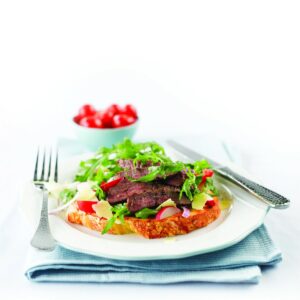
For colour, elegance and delicate flavouring, add flower petals to salad greens.
Buying
Not all flowers are edible. Give roadside or garden centre flowers a miss – unless you are sure they have not been treated with pesticides. Commercially grown edible flowers will be labelled a food crop. Planting your own means you can keep track of how the plant has been nurtured and provided you have correctly identified the plant as an edible flower, you can happily indulge in your petal crop. Choose clean, crisp flowers.
Storing
Cut flowers with stems and place them in water or store in the fridge in damp paper towels.
Using edible flowers
Petals are often the edible part so remove petals from the other flower parts.
Marigold
Yellow and orange petals can be used in cooked dishes (chopped and sautéed) or uncooked dishes (in herb butters and salads). The petals are also known as ‘Poor Man’s Saffron’ – they give a yellow tint to soups, rice and egg dishes, and flavours can be peppery, spicy and tangy.
Nasturtium
The leaves and flowers of this easy-to-grow plant have a peppery tang, not unlike watercress, and are perfect added to salads or used as a garnish.
Pansy
Petals are mild and slightly minty, and the flower as a whole (which is edible) has a grassy flavour. Try it with fruit, green salads and desserts or use as a pretty garnish.
Did you know? Edible flowers were especially popular in the Victorian era.
www.healthyfood.com










